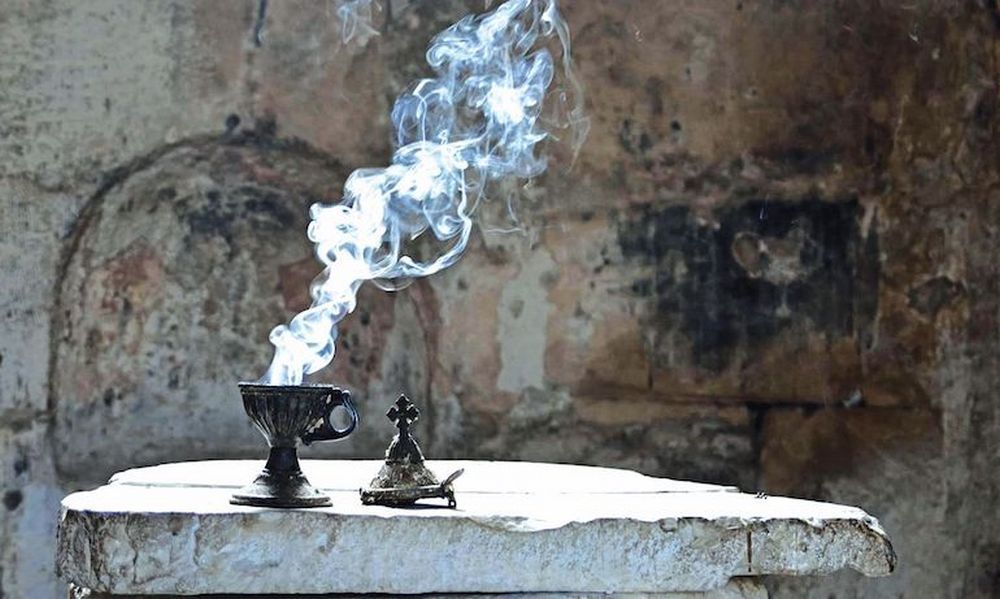
The Orthodox Christian liturgical service of Vespers marks the transition from day to evening. Vespers typically includes the singing of hymns and psalms, petitions, blessings from the priest, and sometimes a procession.
The Rich History and Meaning of Vespers
The vesper service has evolved across centuries of Christian worship, taking on new dimensions of meaning and spiritual resonance with each generation. Tracing its inception to ancient Jewish evening prayers, Vespers bridges the Old and New Testaments, interfusing sights, sounds and rituals familiar to prophets and apostles alike.
Yet what makes Vespers timeless is its focus on fundamental spiritual truths. As day melts into dusk, Vespers immerses us in the primordial narrative: “There was evening and there was morning.” Each facet of the service allegorizes the passage from darkness to light, confusion to clarity, bondage to salvation. We chant verses steeped in OT imagery of evening sacrifices, then transition seamlessly to NT proclamations of Christ as “the true light.”
This is the genius of Vespers: that a service once anchored to one historic hour should so insightfully traverse the biblical landscape, gathering strands of continuity and discontinuity into a nuanced theological tapestry. In this creative interplay of old and new, Vespers epitomizes the spiritual evolution embodied in Orthodox worship.
The Ritual Riches of Vespers
Beyond its exegetical and theological depth, Vespers immerses us in divine mystery through spectacular sensory pageantry. The hymns, processions, incense and icon veneration consummate a liturgical drama that synthesizes sight and sound, body and spirit, communal and cosmic.
Consider the Entrance Hymn, sung as priests emerge from the sanctuary bearing candles that pierce the deepening gloom. The chief celebrant intones “O gladsome light,” his resonant voice like a clarion heralding Christ the Bridegroom. This resonant hymn has illuminated sanctuaries for sixteen centuries with its arresting imagery, comparing natural and spiritual radiance. Suddenly Vespers’ spatial orientation shifts from horizontal to vertical, as flickering flames whisper secrets of eternity.
We then enter the kaleidoscopic heart of Vespers: variants of psalm-anchored stichera shimmering in all eight tones of the Byzantine melodic system. The stichera perfectly capture Vespers’ characteristics of variety, spontaneity and embellishment. Improvisational elaborations by virtuoso vocalists produce endless permutations within each distinct modal “color.”
As stichera crescendo into the ornate Doxastikon hymn, the tableaux reaches its symbolic zenith. Chanted creed, swinging censer, gospel book and icon fused in a choreography of light and acclamation—theophany and doxology become one.
Evensong of the Ages
Across its variegated history, Vespers has remained a touchstone of spiritual vitality and imagistic wonder in Orthodox life. Like a kaleidoscope turning, it perpetually refracts divine light into new shades of insight. One generation’s sunset hymn is another’s allegory of salvation; last century’s candlelit procession becomes this year’s reenactment of the Exodus.
As tangible shadows lengthen outside chapel walls, Vespers translates fading afterglow into lyric prophecy. We exit into the night prepared to traverse our own wildernesses, warmed by the flame of its unflagging Vigil light. For just as this singular service encapsulates the passage from evening to morning, so it distills the essence of faith’s perennial Advent hope: Maranatha—”Come, Lord!”
References
- “Christian Prayer and Worship,” Cambridge University Press, 2018.
- “Orthodox Liturgical Practices,” Bethany Lutheran College, accessed December 15, 2023.
- Melodos Orthodox Library, accessed December 15, 2023.
- Vespers in Orthodox Worship,” Nativity Orthodox Church, accessed December 15, 2023.
- The Liturgy of the Hours,” Greek Orthodox Archdiocese of America, accessed December 15, 2023.
